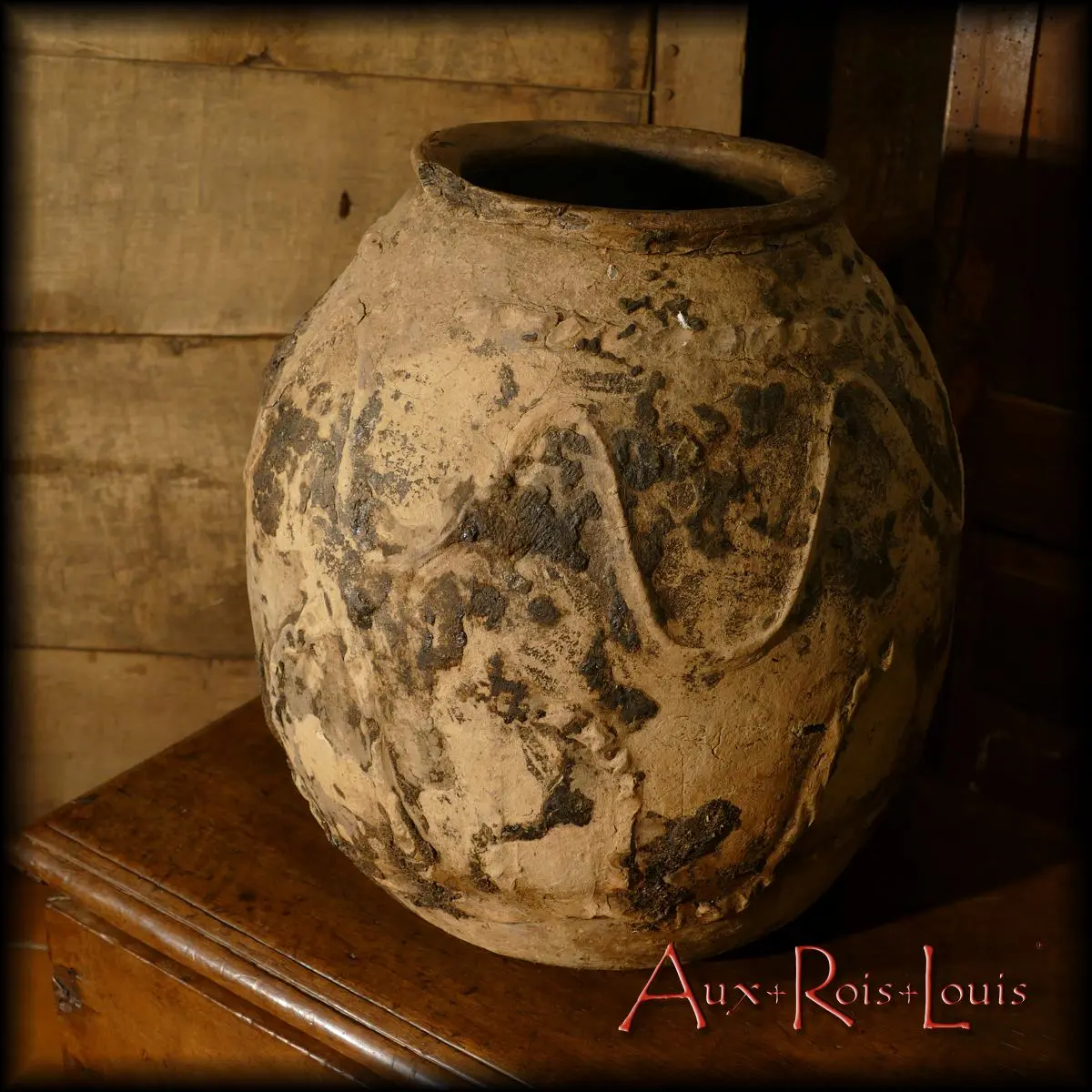Mélard in white clay – 18th century – Cantal – [PA073]
Globular in shape, its bottom is rounded, this melard is surrounded by fingered serpentiform strips superimposed freely, each printing its bold curves as it pleases. This is the chic asset of this pottery from rural Cantal in the 18th century, which moreover appears in its simplest form. The raw white clay that constitutes it is devoid of any form of glaze.
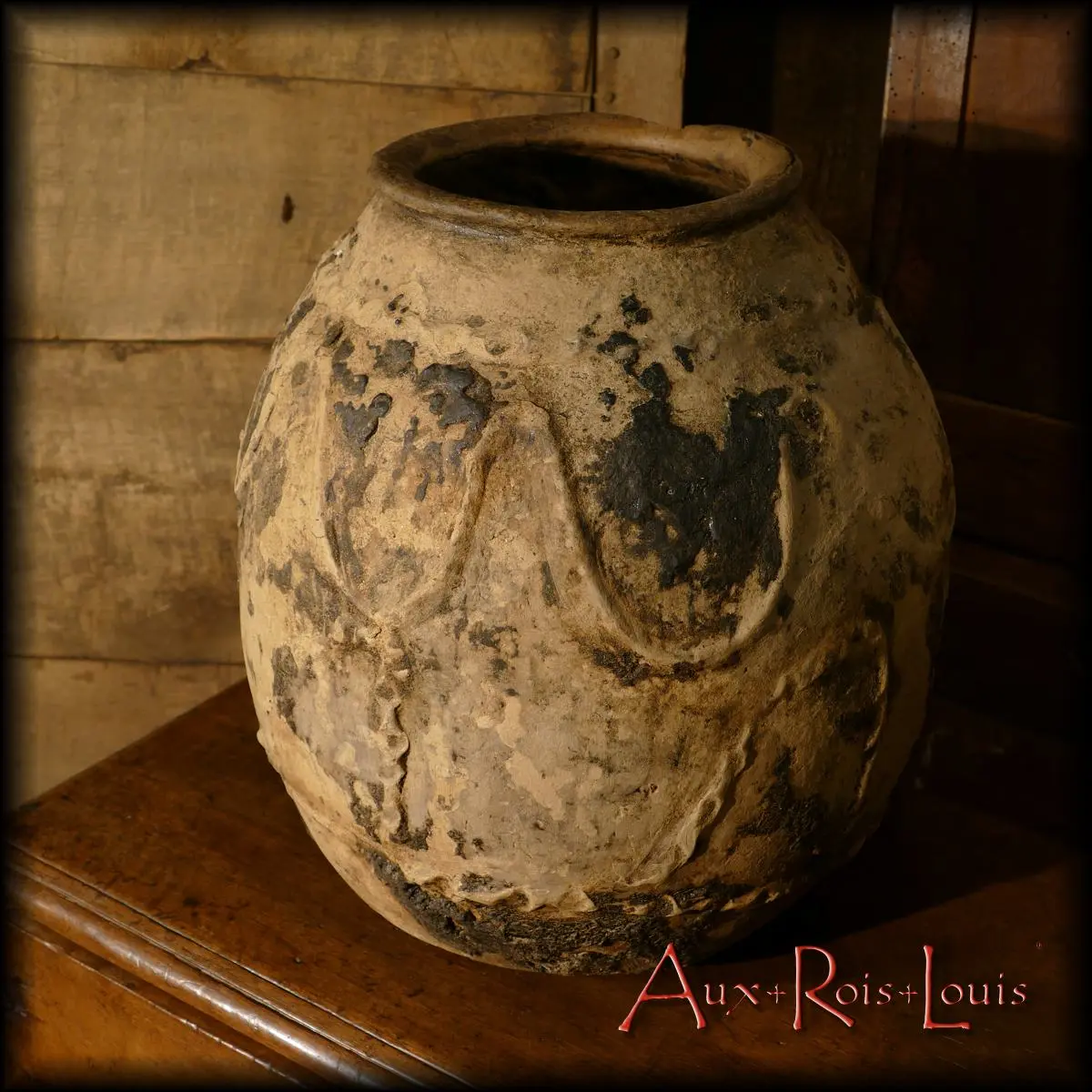

This simplicity is poetically balanced by the hues and silhouettes that have formed over its life as a pitcher, on the farm. This pottery contained walnut oil used for household lighting. Given its porosity, the oil managed to penetrate the body in places, hence these brown traces which evoke certain figures of primitive parietal art. They are actually natural concretions of walnut oil.
Dimensions
Height: 45 cm, height, diameter: 42 cm
Reference: [PA073]
Hanging Mélard – 18th century – Cantal – [PA074]
It should be remembered that in the 18th century, mélards constituted reserves for walnut oil, at that time used as fuel for lighting. To facilitate the tilting of this pottery when pouring the oil through its tubular spout, two handles were provided through which a rope was slipped in order to be able to suspend it once filled.
Its beautiful water-green glaze was obtained thanks to copper oxides skilfully chosen by the Auvergne potter who shaped it with a coil and who, in his own way, signs his work with the marks of his fingers printed in the many bands of which he adorned it. An aesthetic asset greatly appreciated by the customers of the potters’ markets in the 18th century in the heart of Cantal.
Dimensions
Height: 41 cm, height, diameter: 37 cm
Reference: [PA074]
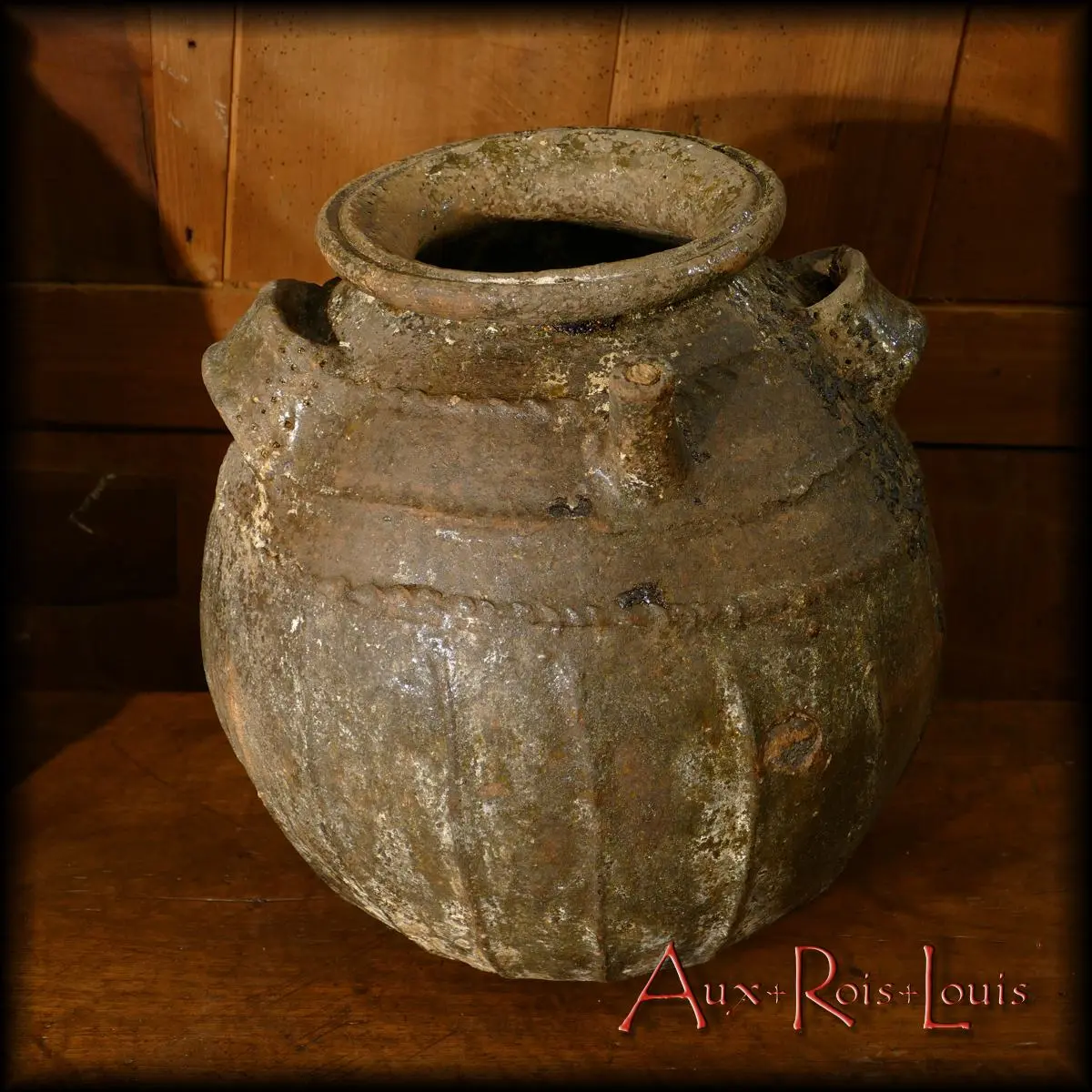

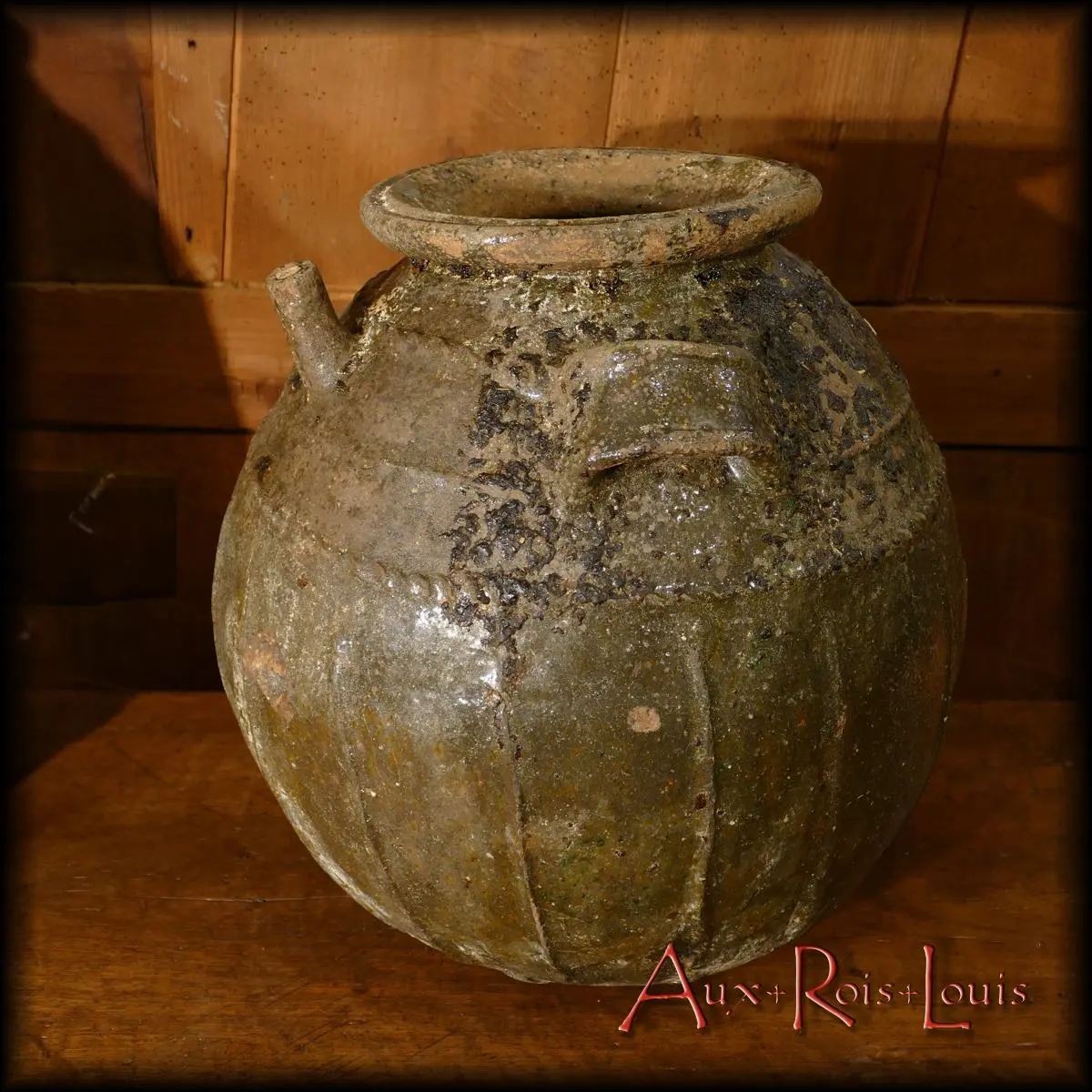
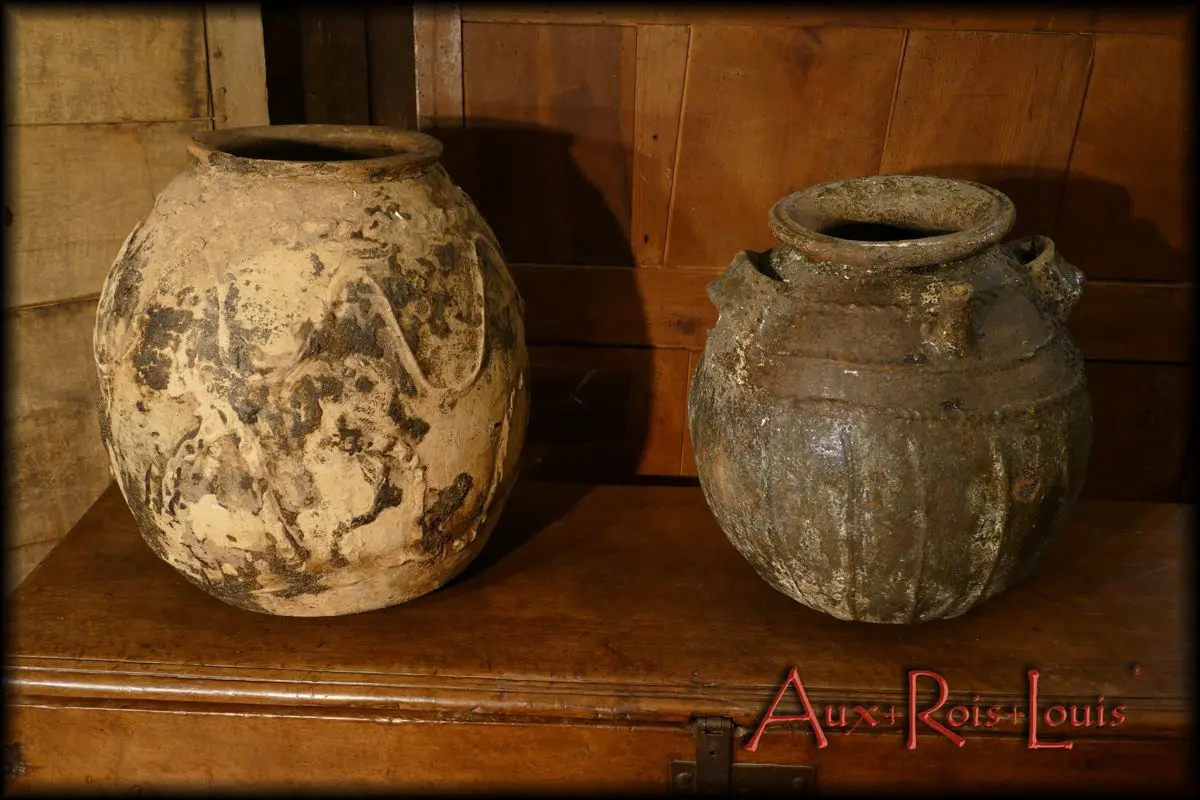

![Mélard in White Clay and Suspended Mélard – [PA073] [PA074] – 18th century – Cantal Two walnut oil jugs, fuel used in the 18th century for lighting. The mélard on the left is in raw white clay on which concretions come from the interior. The mélard on the left benefited from a water-green glaze which made it waterproof. Its two handles allow it to be hung on a rope to be able to lean it and thus facilitate the flow of oil.](https://www.aux-rois-louis.com/wp-content/uploads/2022/10/PA073_PA074_P1660311-1200x600.webp)
![Mélard in White Clay and Suspended Mélard – [PA073] [PA074] – 18th century – Cantal Two walnut oil jugs, fuel used in the 18th century for lighting. The mélard on the left is in raw white clay on which concretions come from the interior. The mélard on the left benefited from a water-green glaze which made it waterproof. Its two handles allow it to be hung on a rope to be able to lean it and thus facilitate the flow of oil.](https://www.aux-rois-louis.com/wp-content/uploads/2022/10/PA073_PA074_P1660311.webp)
